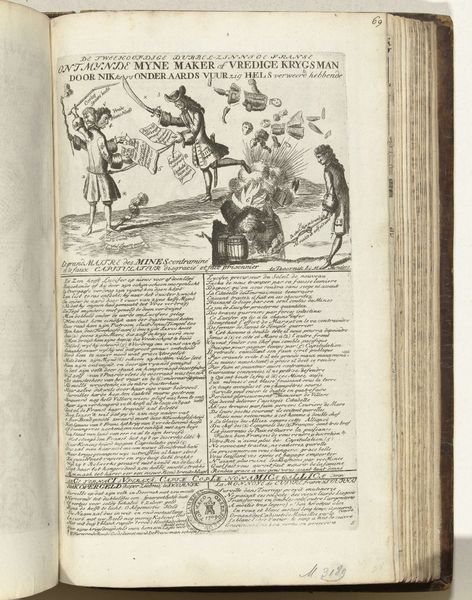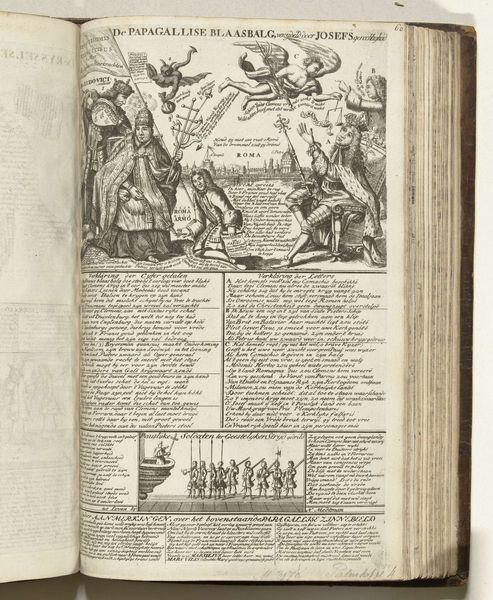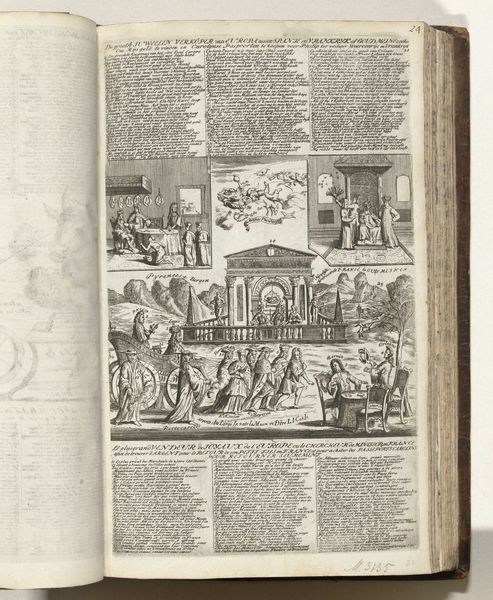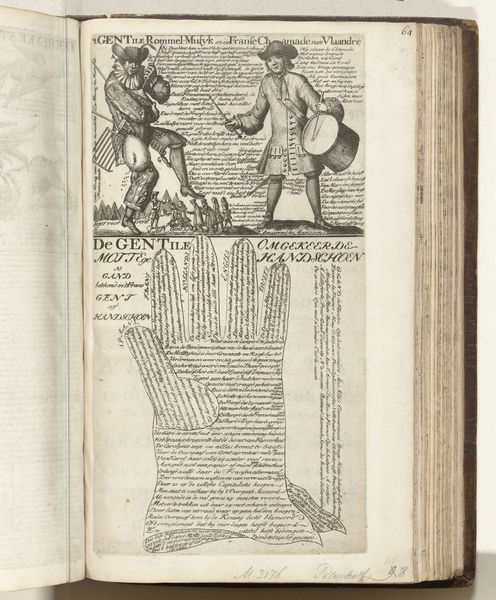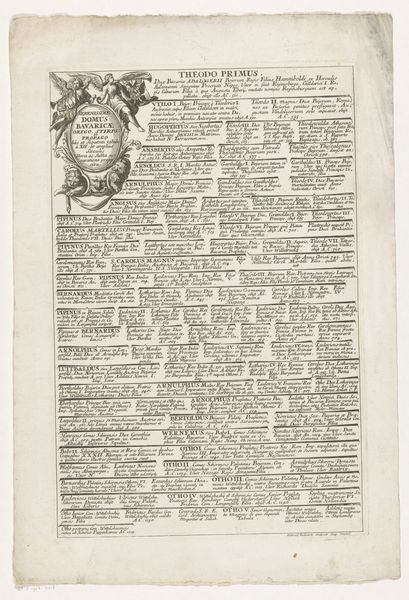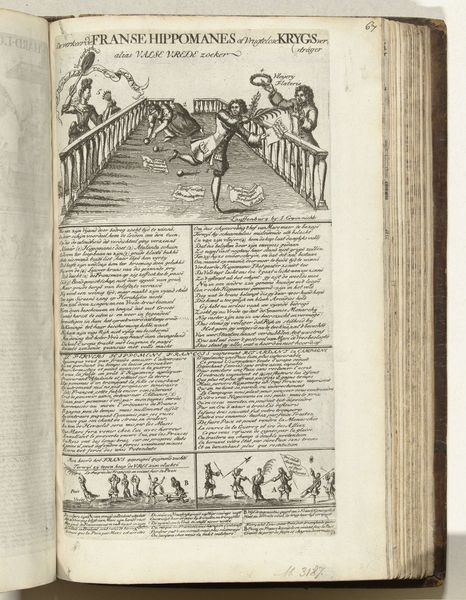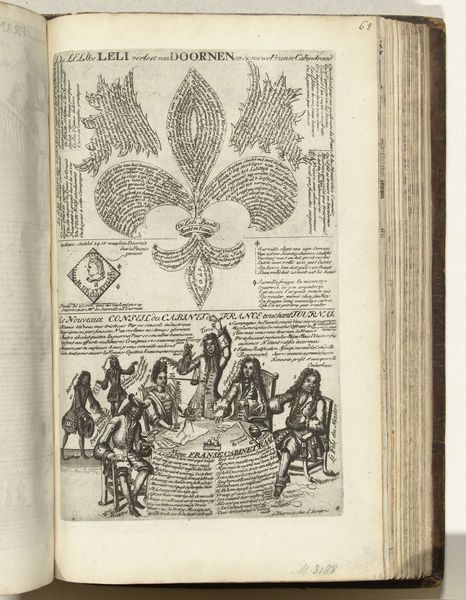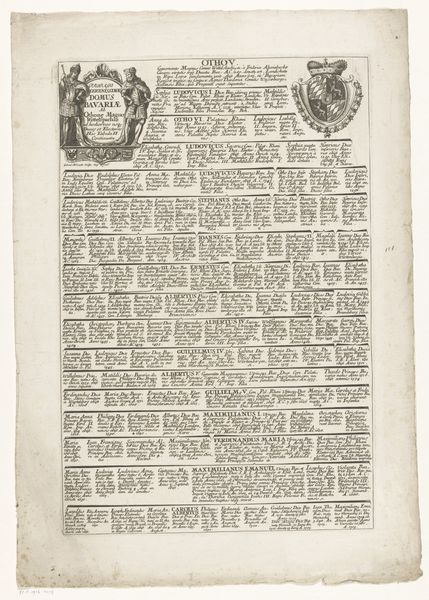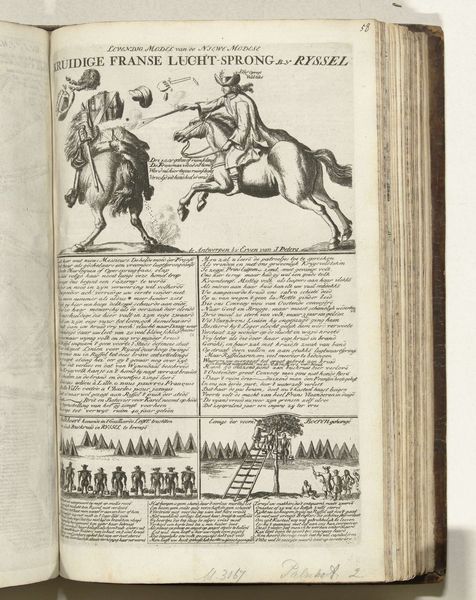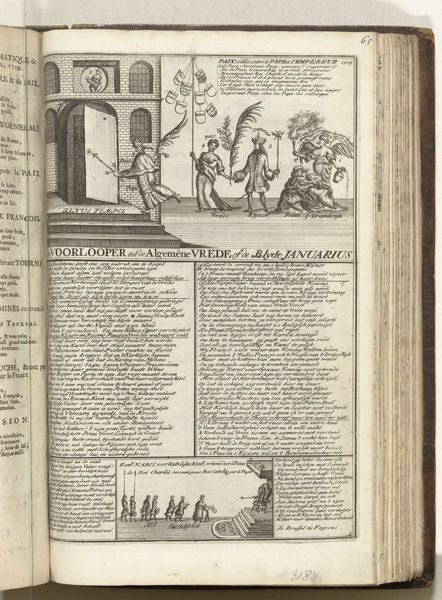
drawing, print, etching, paper, ink, engraving
#
drawing
#
narrative-art
#
baroque
# print
#
etching
#
paper
#
ink
#
history-painting
#
engraving
Dimensions: height 315 mm, width 200 mm
Copyright: Rijks Museum: Open Domain
Carel Allard produced this engraving, "De Rijsselse Tuimelaar," around 1708. It's an example of early Dutch printmaking, using etched lines on a metal plate to create an image on paper. The print depicts a tumbler pigeon, a type known for its acrobatic flight, alongside text and figures. What’s fascinating is the way the text itself becomes part of the image, filling the shapes of the pigeon and a figure holding a blowpipe. This merging of image and text was typical of the time, reflecting a culture where words and images were deeply intertwined. Consider the labor involved: from preparing the metal plate, to the meticulous etching process, to the printing itself. This wasn't just about creating an aesthetic image, but about disseminating information, knowledge, and, in this case, perhaps even a bit of wonder about the natural world. The very materiality of the print, the ink on paper, speaks to the broader social context of 18th-century Dutch society, where printed images played an increasingly important role in shaping public opinion and understanding.
Comments
No comments
Be the first to comment and join the conversation on the ultimate creative platform.
